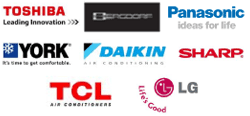What is SEO? A Search Engine Optimization Guide
Link building is a set of practices aimed at increasing the number of links you get from relevant, quality sites. Much of technical SEO is about improving website performance and the user experience. Technical SEO involves improving various technical aspects of your website. The goal is to make sure search engines can crawl and index your website properly. They use programs (called website crawlers or bots) that follow links from known pages to discover new pages.
The majority of search engines offer advice on how to raise your page rating, but the precise algorithms are closely guarded and often updated to prevent abuse. When doing SEO for blog posts, you’ll want to add both internal and external links. This is an important metric to track because the higher you rank, the more traffic you can get from search engines. Keyword rankings refer to where your website ranks on a SERP for specific keywords. Organic search traffic refers to how many visits your site gets from organic (unpaid) search engine results.
SEO Stats to Reference Everywhere in 2025
- Local search results are extremely sensitive to proximity, which refers to the location of the searcher and/or the location specified in the query (if the searcher included one).
- These will make your site look cleaner and feel more professional, as well as keep your loading time down.
- They are displayed in the search results or when the page is shared on social media.
- Here are some additional link building methods I’ve found highly effective.
The following is a list of popular search engine optimization tools that are used by industry professionals. In the complex and ever-evolving world of Search Engine Optimization (SEO), having access to accurate and comprehensive data is crucial for making informed decisions. SEO tools play a vital role in gathering, analyzing, and interpreting this data, offering insights into your website’s performance, your competitors, and the market. For beginners, understanding how to implement SEO tools for comprehensive data analysis can be the key to unlocking SEO success. Since voice searches are more detailed, long-tail keywords become incredibly important.
Unlike algorithmic penalties, manual actions are explicitly communicated to webmasters through Google Search Console. Each of these factors plays a role in how well your site ranks for relevant search queries. The better you optimize these elements, the higher your chance of being seen by potential visitors when they search for information related to what you offer. They’re the pages that Google and other search engines show in response to a user’s search query. Because, ultimately, SEO isn’t only about being found on search engines and driving traffic to your website. It’s about providing a great experience and generating leads and revenue.
What are the types of SEO?
Once you choose the keywords, you can go ahead and start optimizing your pages for those keywords. Before you do anything with your website, the first thing you need to do is understand what keywords you want to rank for. In this process, you choose the primary and secondary keywords around which you build meta tags and content.
In this chapter, you will learn how to find your niche and how to find profitable keywords you can rank for. Once the internet user submits a search query, the search engine digs into the index and pulls out the best results. The list of the results is known as a SERP (Search Engines Results Page). The search engine index is basically a gigantic library of all the crawled websites with a single purpose – to understand them and have them available to be used as a search result. The search engines try to analyze and understand the pages, categorize them, and store them in the index. Crawling is the process in which search engines scan all the internet webpages continuously.
Because it wants to provide helpful and reliable results to users. SEO provides long-term, sustainable traffic but takes time to build, while PPC offers immediate visibility but requires ongoing ad spend. Similarly, sneaky redirects trick users by sending them to an unrelated or spammy page, harming user experience.
For example, one of the goals with my guide to learning SEO was to promote some of my older posts. Which means that you want BHS Links to add some native content to your social media posts. The truth is, unless you already have a massive audience, you need to hustle to get the word out about your new content.
Categories: News
Contact Us

